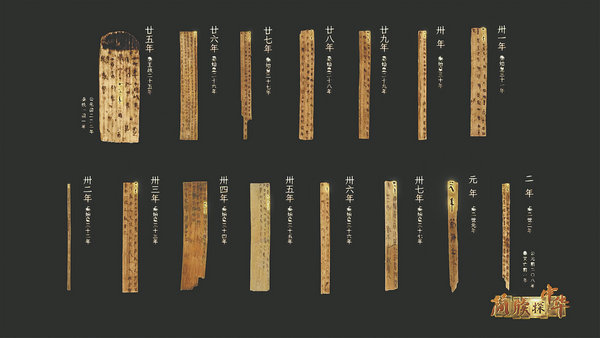

Ancient bamboo and wooden texts reveal a sophisticated system of governance.
Western Han Dynasty (206 BC-AD 24) historian Sima Qian once lamented there were few historical records about the Qin Dynasty (221-206 BC). "What a pity! There's only Qinji (Records of Qin), but it doesn't give the dates, and the text is not specific," he wrote, when compiling a chapter on chronology for his Shiji (Records of the Grand Historian).
If an ancient master felt frustrated, you can well imagine how present-day scholars feel. But sometimes a breakthrough happens.
Sima would have been incredibly envious if he were told that more than 38,000 pieces of bamboo and wooden slips were kept in an old well in the ancient town of Liye, Central China's Hunan province, and would be unearthed more than 2,000 years after his time.
The figure is 10 times the total amount of Qin Dynasty slips discovered before. These documents are a comprehensive record of the administration, defense, economy and social life of a county, Qianling, from 222 BC, the year before Qin annexed the other six states of the Warring States Period (475-221 BC) and founded the dynasty, to 208 BC, not long before Qin's downfall.
"For the first time, documents left by Qin officials prove the existence of a county," says Zhang Chunlong, researcher at the Hunan Provincial Institute of Cultural Relics and Archaeology, in the first episode of cultural variety show Jiandu Tan Zhonghua (Discovering China in the Bamboo and Wooden Slips), broadcast on China Central Television's channel, CCTV-1, since Nov 25.